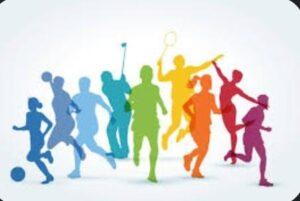Sports and technology are two seemingly distinct fields that have become increasingly intertwined in the modern era. The utilization of technology in sports has revolutionized the way athletes perform, coaches strategize, and fans engage with their favorite sports. This article explores the profound impact of technology on sports, covering aspects ranging from performance enhancement to fan experience for sport news.

1. Performance Enhancement
One of the most significant impacts of technology in sports is its role in enhancing athletes’ performance. From high-tech equipment to advanced training techniques, technology has opened up new horizons for athletes sports news.
1.1. Wearable Technology
Wearable devices have become indispensable tools for athletes. From smartwatches that track vital signs to GPS trackers that monitor movement and performance, athletes now have access to real-time data that helps optimize their training and recovery. Wearables like the WHOOP Strap, for instance, provide insights into sleep, recovery, and strain, allowing athletes to fine-tune their routines for better performance in sport news.
1.2. Biomechanics Analysis
Advancements in biomechanics have enabled in-depth analysis of an athlete’s movement, helping them correct and optimize their techniques. Motion capture systems and 3D imaging technology have become invaluable for sports like golf, tennis, and even basketball, as they help athletes understand their movements and make adjustments for peak performance to sport news.
1.3. Nutritional Advancements
The use of technology extends to athlete nutrition, where precise dietary plans are formulated using data-driven insights. Athletes’ nutritional needs are calculated based on their training and performance data, ensuring they receive the right nutrients for optimal energy and recovery sport news.
2. Data Analytics and Performance Metrics
Technology has ushered in an era of data-driven sports news. Coaches, athletes, and analysts now have access to a wealth of performance metrics that aid in decision-making and strategy.
2.1. Sports Analytics Software
Sophisticated sports analytics software processes vast amounts of data to provide insights into player performance and team dynamics. In baseball, for example, the use of Stat cast has become commonplace, providing detailed statistics on player movements and ball tracking.
2.2. Video Analysis
High-speed cameras and video analysis tools enable coaches to dissect every moment of a game. This technology helps players understand their strengths and weaknesses, allowing for targeted improvement.
3. Fan Engagement
Technology has significantly improved the way fans engage with their favorite sports. Whether it’s through virtual reality or interactive apps, fans now have more immersive and personalized experiences.
3.1. Virtual Reality (VR) and Augmented Reality (AR)
VR and AR technologies are transforming the fan experience. Fans can now watch games in virtual arenas, with 360-degree views and interactive features. AR apps enhance the in-stadium experience by providing real-time stats and overlays on their smartphones.
3.2. Social Media and Second Screen Experiences
Social media platforms like Twitter and Instagram have become hubs for sports fans. Live tweeting, streaming, and sharing of highlights have given fans a direct channel to engage with athletes and teams. Second screen experiences, where fans can access real-time stats and interactive content while watching games, have also gained popularity.
4. Injury Prevention and Recovery
Technology plays a crucial role in preventing injuries and expediting recovery for athletes. In an era where injury management is a top priority, these innovations are invaluable.
4.1. Wearable Injury Sensors
Wearable sensors are not only used for performance optimization but also for injury prevention. These devices can monitor athletes’ movements and identify patterns that may lead to injuries, allowing for timely adjustments in training routines.
4.2. Rehabilitation Technology
Rehabilitation technology has made significant strides, with tools like cryotherapy chambers, hyperbaric oxygen chambers, and specialized recovery equipment helping athletes recover faster from injuries.
5. Game Officiation and Fairness
Technology is used to ensure fairness and accuracy in sports. This is particularly evident in sports where precise measurements are crucial.
5.1. Hawk-Eye Technology
In tennis and cricket, Hawk-Eye technology uses cameras and computer algorithms to track the trajectory of the ball with incredible precision, ensuring correct decision-making by referees and officials.
5.2. VAR in Soccer
The introduction of Video Assistant Referee (VAR) in soccer has brought more accuracy to decisions regarding goals, fouls, and offside calls. It has become a crucial tool for match officials.
6. Conclusion
The marriage of sports and technology is here to stay. As technology continues to advance, its impact on sports will only grow. Athletes will continue to push the boundaries of their performance, fans will enjoy more immersive experiences, and the fairness and accuracy of sports will be maintained at the highest level. The modern era has ushered in a new age of sports, where the marriage of technology and athleticism has created a winning formula for all involved.
